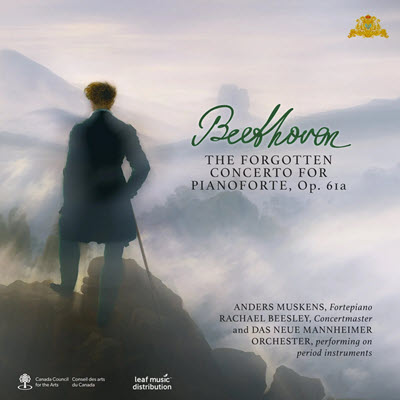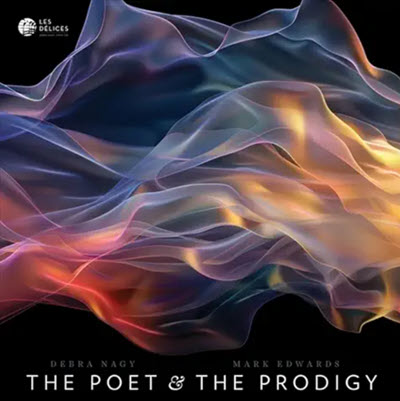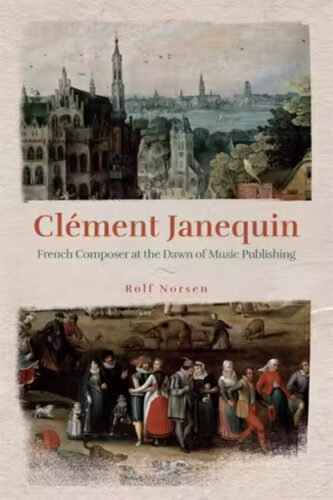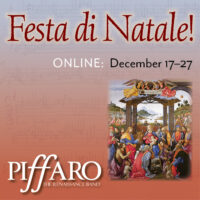by Anne E. Johnson
Published April 7, 2025
The Edinburg Rollick, Ruckus with fiddler Keir GoGwilt and vocalist Fiona Gillespie. Ruckus Records.
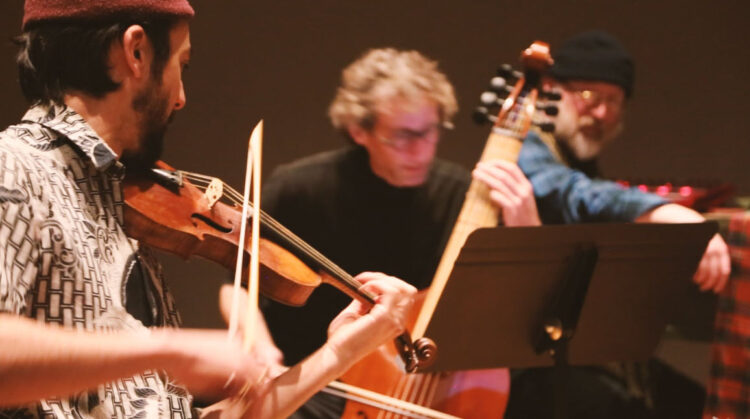
“And nev-er in-tend-ing to visit them more. No nev-er, no nev-er intending to visit them more.”
One could argue that this line from Henry Purcell’s Dido and Aeneas, quoted in many a music history textbook, is a good reason to think of Ruckus’ new recording of Scottish folk music as relevant to the early-music scene. Purcell set that line using three “Scotch snaps,” dotted rhythms in which the short comes first (shown in italics above), followed by the longer note, causing a punching syncopation associated with the music of Scotland. Indeed, Ruckus’ guest fiddler, Keir GoGwilt, plays the first note of each Scotch snap on this album more like a 32nd note than a 16th.
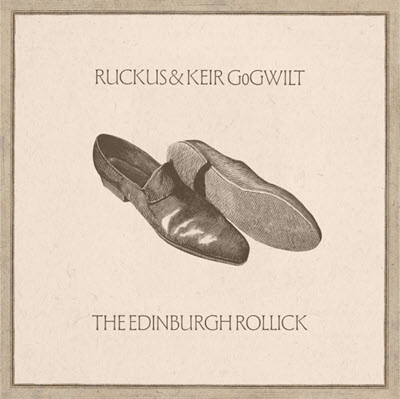
However, this collection of tunes by legendary fiddler Niel Gow (1727-1807), who helped created the Scottish style and sound, doesn’t need the blessing of Henry Purcell or G.F. Handel, or any other classical composer who borrowed from the Scottish tradition. It is early music, a rich repertoire in and of itself, performed with endless ingenuity by Ruckus and GoGwilt on the ensemble’s second album.
Although the press release for The Edinburgh Rollick touts the way the tunes are woven “into large-scale dramatic forms,” those of us who play Celtic music would simply say that the tunes are in sets. That’s how trad tunes are always played, strung together with other tunes, often of the same type (a bunch of reels, for example, each played two or three times), usually in related keys.
Putting together a good set is a particular skill, one that GoGwilt has mastered. True, the Edinburgh-born, New York-based fiddler and musicologist does link unusually large numbers of tunes together in each set and includes contrasting types and tempos; perhaps it’s a bid to have this music taken more seriously by creating something closer to “movements.” In any case, the long sets are exciting, and they’re craftily enough arranged to keep them from becoming monotonous. The main source material is Books 1 and 2 of the Gow Collection of Strasthpey Reels, published in the 1780s. (A strasthpey is a dance tune — and also a dance, as is true of more familiar continental Baroque forms such as courante, bourée, and allemande — in duple time like a reel, made up of two or more four- or eight-bar sections.)
Some details from the opening seven-tune Jenny Sutton Set will serve as an example of the imagination on view for the whole tracklist: A drone on viola da gamba (Douglas Balliett) is the only accompaniment for “Link Him Dodie,” but when the second tune, “Yester House,” begins, Rami El-Aasser explodes onto the scene with thrilling percussion; keep an ear out for Clay Zeller-Townson, usually on Baroque bassoon, clicking away at the spoons! By the time we get to “The Flaggon,” tune number four, which GoGwilt plays at lightning speed, the texture pulls back to just fiddle and the tickle of the harpsichord (Elliot Figg). That’s followed by the more moderately paced “Miss Pensy McDonald’s.” The set concludes with slyly rich continuo accompaniment — perhaps a wink at the need to be sufficiently “early-music” — to the tune called “Jenny Sutton.”
GoGwilt has a deep stylistic understanding of the Scottish trad sound. At no time could one mistake him for a classical violinist dabbling in folk. Crucially, he has utter command of the wild rhythmic energy needed to make this repertoire sparkle, not to mention being unafraid to crunch his bow against the strings. That rosin-induced friction is an essential noise in Celtic fiddling. If GoGwilt’s tempos get a bit fast for strasthpeys, which are generally played and danced more slowly than reels, there’s certainly no lack of technique to back up his speed.
To provide welcome contrast with all the toe-tapping dance tunes, the wistful airs “Lord Gregory” and “The Broome of the Coudenknowes” are sung in a translucent, highly ornamented soprano by Fiona Gillespie.
Ruckus describes itself as a continuo band; true to that label, it provides an impressive range of accompaniment and counterpoint with flare and style. Clearly, they are approaching Niel Gow as the compositional equal to the likes of Purcell and Handel.
Anne E. Johnson is EMA Book Editor and frequent contributor to Classical Voice North America. She teaches music theory, ear training, and composition geared toward Irish trad musicians at the Irish Arts Center in New York and on her website, IrishMusicTeacher.com. For EMA, she recently wrote about new approaches to old music with a new Bach Passion and a Vivaldi “Seasons” Opera.

